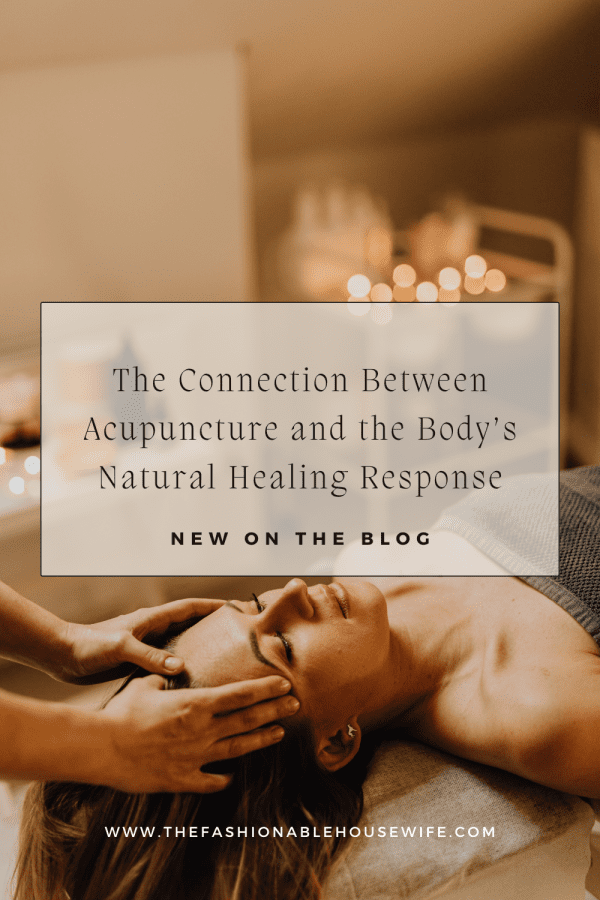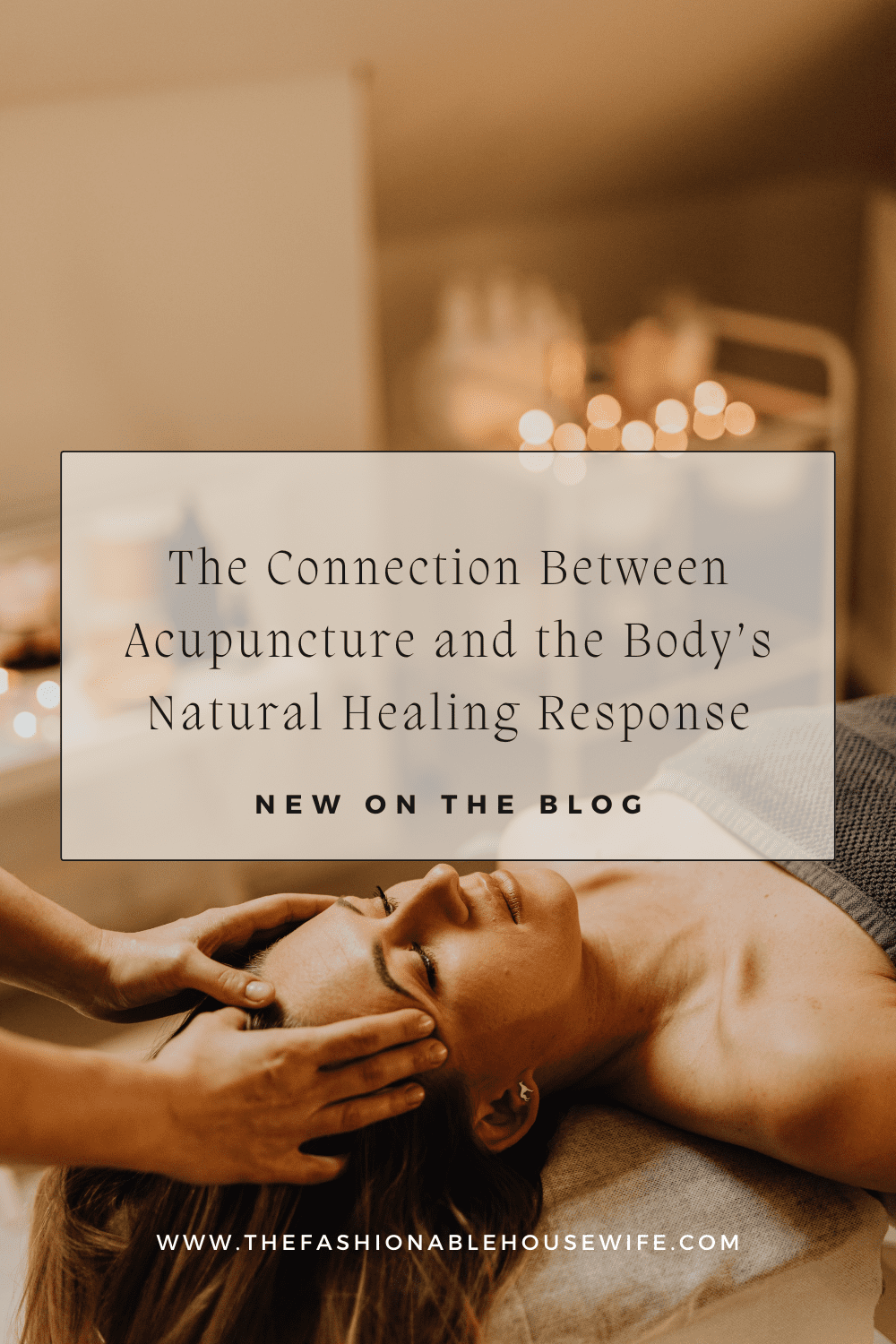The Connection Between Acupuncture and the Body’s Natural Healing Response

Key Takeaways
- Acupuncture activates the body’s natural healing response by gently stimulating specific points.
- It influences multiple physiological processes—nervous, immune, circulatory, and endocrine—to promote balance and recovery.
- Modern research supports its effectiveness for pain management, stress reduction, hormonal regulation, and inflammation control.
- The therapy bridges ancient healing wisdom and contemporary medical science, offering safe, non-invasive support for whole-body wellness.
Introduction to Acupuncture and Healing
For thousands of years, acupuncture has stood at the core of Traditional Chinese Medicine (TCM), offering a natural, holistic approach to health and wellness. Using delicate, hair-thin needles, practitioners stimulate precise points on the body to restore balance and trigger the body’s inborn healing ability. This centuries-old method is more than just folklore—it integrates complex theories about energy flow, or “Qi,” and how it impacts our physical and emotional health. Today, people seek acupuncture for a variety of reasons, with increasing numbers turning to acupuncture for pain management in Los Angeles to cope with chronic conditions, recover from injuries, reduce stress levels, and promote overall well-being. But what exactly is happening within the body when these ancient needles work their magic, and why does modern research continue to affirm their effectiveness? Acupuncture works through a remarkable synergy of physiological mechanisms, bridging millennia-old wisdom with modern scientific understanding. When the needles interact with specific points, they set off a cascade of reactions, including the communication between nerve fibers and the brain, the regulation of blood flow, and the delicate balance of immune responses.
Stimulating the Nervous System
Acupuncture begins its work by profoundly engaging the nervous system. When needles are gently inserted into specific acupoints, they stimulate sensory nerves beneath the skin and in surrounding muscle tissues. This triggers nerve signals that travel to the brain and spinal cord, prompting the release of endorphins—natural chemicals known for their pain-relieving and mood-boosting effects. Endorphins not only reduce the perception of pain but also induce a feeling of general well-being or mild euphoria. Notably, acupuncture has also been shown to adjust levels of neurotransmitters such as serotonin and dopamine, influencing how we perceive pain, regulate mood, and process emotional stress (NIH Research Matters). These neurochemical changes help explain why patients often notice both physical relief and a lifted mood following a session, making acupuncture a valuable therapy for conditions like depression, anxiety, and stress-related disorders.
Enhancing Blood Flow and Oxygenation
The therapeutic effects of acupuncture reach well beyond nerve modulation. By causing a microtrauma at precise locations, needle insertion triggers a local vasoactive response, most notably vasodilation—the widening of blood vessels. This physiological reaction allows for increased blood flow to targeted areas, delivering vital oxygen and nutrients, while simultaneously flushing out metabolic waste products and toxins that accumulate with injury or chronic tension. Better circulation supports tissue repair, reduces muscle tightness, decreases inflammation, and can accelerate healing from both acute injuries and chronic conditions (Harvard Health Publishing). Athletes and individuals recovering from surgery frequently turn to acupuncture as a way to hasten the healing process and minimize downtime.
Modulating the Immune Response
Acupuncture remarkably influences the functioning and balance of the immune system. It modulates the activity and production of critical immune cells, harmonizing the body’s defensive and healing reactions. Studies have demonstrated that regular acupuncture may help lower inflammation by affecting cytokine production, influencing immune cell behavior, and controlling the proliferation of pro-inflammatory factors. This subtle yet powerful shift in immune activity assists the body in recovery from illness or injury and in maintaining greater resilience against future health threats. People who struggle with frequent infections, chronic inflammatory disorders, or allergies may experience fewer symptoms and an improved quality of life after incorporating acupuncture into their care routines. The immune-modulating effects contribute to improved recovery times, reduced severity of flare-ups, and increased overall vitality, without many of the side effects that can come from medication-based therapies.
Balancing the Endocrine System
One of acupuncture’s more subtle—but profound—roles is in regulating the endocrine system, the intricate network that governs hormone production and balance within the body. By stimulating specific acupoints, practitioners can help normalize hormone levels, which, in turn, offers relief to those struggling with stress, anxiety, hormonal imbalances, menstrual issues, and disorders like insomnia. This comprehensive balancing effect supports mental and physical health, reinforcing the body’s natural inclination towards healing. For women, acupuncture is often sought after as a natural strategy to support reproductive health, ease menopausal symptoms, or balance conditions related to the menstrual cycle. In both men and women, improved hormonal regulation translates into better energy, enhanced mood, and a stronger sense of overall wellness. The soothing, regulatory influence of acupuncture on hormones may also help those dealing with fertility or metabolic issues, making it a versatile addition to holistic and integrative care.
Addressing Chronic Inflammation
Chronic inflammation is at the root of many modern health challenges, from joint pain to autoimmune disorders. Acupuncture demonstrates a powerful anti-inflammatory effect by reducing markers such as IL-6 and TNF-alpha while enhancing the body’s production of anti-inflammatory compounds that help resolve tissue irritation. This dual action alleviates inflammation-driven pain and swelling and helps bring the immune system back into healthy alignment, calming overactive immune responses that fuel many chronic diseases. People with rheumatoid arthritis, asthma, or digestive inflammation can find significant relief through regular acupuncture sessions. By encouraging the body to curb excessive inflammation and restore healthy tissue function, acupuncture becomes a valuable asset in managing and preventing a broad array of chronic illnesses.
Acupuncture in Modern Medicine
The medical community is increasingly taking notice of acupuncture’s wide-ranging benefits. The German Acupuncture Trials, one of the largest studies of its kind, demonstrated greater effectiveness for acupuncture over conventional therapies for chronic pain and osteoarthritis. As a result, hospitals, pain clinics, and integrative health settings across the globe are now routinely including acupuncture as an adjunct to conventional treatments for pain, stress management, migraines, musculoskeletal conditions, and more. These clinical applications are continually expanding, supported by a growing body of evidence and real-world success stories (Mayo Clinic). Researchers are also investigating acupuncture’s potential in cancer-related symptoms, digestive health, and mental wellness. As more is revealed about its mechanisms, acupuncture is positioned as a bridge between traditional healing and progressive, science-backed medicine, delivering safe, effective results with minimal side effects.
Final Thoughts
Acupuncture is far more than a tradition—it’s a dynamic practice that sparks the body’s powerful healing systems into action. By modulating nerves, supporting circulation, balancing hormones, and regulating immune activity, acupuncture helps the body restore what it naturally craves: balance, vitality, and well-being. The beauty of acupuncture lies in its ability to harness the body’s intrinsic wisdom, supporting a return to a harmonious, pain-free, and energized state. As scientific exploration advances, this remarkable therapy remains a bridge between the wisdom of the past and the promise of future health.

